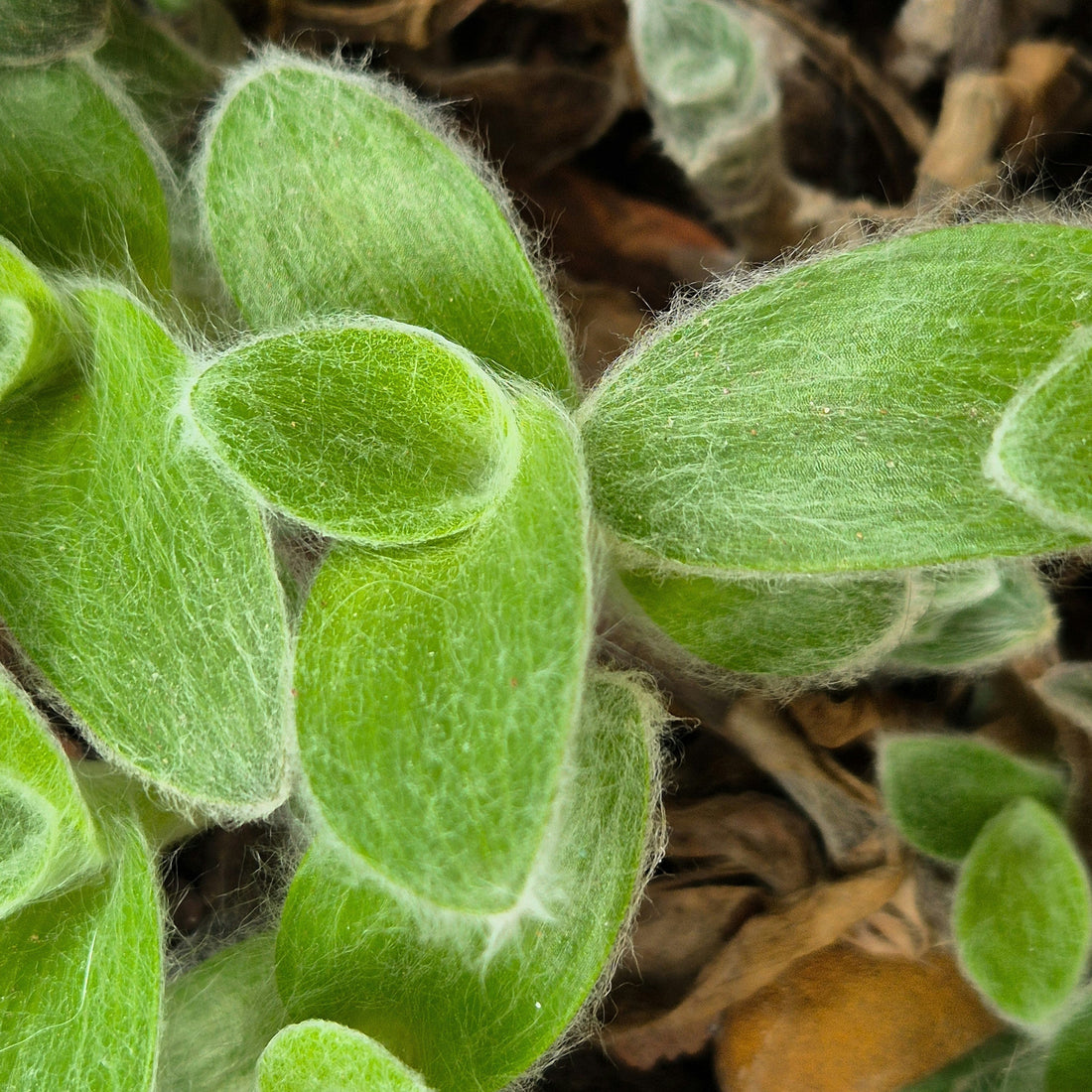In this article, we are focusing on members of the family Commelinaceae. This includes Callisia, Gibasis, and Tradescantia. Each of these genus have similar characteristics and growing habits which is the focus of this article. All plants will be identified clearly throughout the article to avoid confusion between genus.
Inch plant, boat lily, oyster plant, spiderwort, wandering dude, turtle vine. This family goes by many common names, and they are one of the most prolific and beloved families of house plants out there. Showing off in a myriad of colours and textures, propagating quickly and growing even faster, it makes sense we love these plants.

T. zebrina "White"
Often touted as very easy to care for, the inch plant however, comes with a few quirks of its own. Some people see incredible success, and others not so much. Let's explore what conditions allow these plants to thrive.
Most varietiesof spiderwort LOVE the sun! Complete with succulent leaves and stems that allow them to hold onto water, they also produce their own sunscreen! This sunscreen is called anthocyanin. It is a naturally occurring pigment that protects plants from extreme temperatures. This pigment typically shows up as red in colour, but can also be found in blues, blacks, and purples. This is the same chemical that colours our beautiful autumn leaves, and blushes tree buds in the spring. This pigment is also responsible for the fun array of colours seen in the spiderwort family.

C.soconuscensis
Colours found in the spiderwort family include lime green to deep green, purple, pink, fuscia, red, copper, silver, white, and cream. The most common colours however are green and purple. This plant family is an excellent place to start when looking for fast growing and colourful plants.

T. purpusii
Many plants are sold to us with lighting instructions that say "bright indirect light" without any indication as to what "bright indirect light" even means. It's become a term distributors can slap on any label and get away with, because the plant wont die in bright indirect light, but it wont thrive either. Most spiderwort want to be in higher light than classically advertised. Here is a short list of sun loving spiderwort.
Full sun loving varieties:
T. spathacea Purple Heart Oyster Plant
G. pellucida "Tahitian Bridal Veil"
T. fluminensis
C. soconuscensis
T. spathacea "Tricolour Oyster Plant"
C. navicularis

T. fluminensis variegata
There are plenty of spiderwort that love cooler and darker areas. Brighter light can bring out white variegation, however too much light on albo variegated plants can cause them to burn more quickly. Keep in mind that shade loving plants require more light than you might think. The shade outside is far brighter than indirect sunlight inside. So shade loving outside does not equate to low light tolerance inside. Most members of the spiderwort family will become leggy and lose their vivid colours in low light. WIthout 6+ hours of bright indoor light, your plant will not thrive, even if its shade loving outside.
Shade loving varieties include:
T. nanouk
T. fluminensis Variegata
T. purpusii
T. zebrina
C. Pink Lady

When growing spiderworts indoors, I always recommend placing them near a south or west facing window. They can tolerate east light but will become leggy and lose a lot of colour, even the shade loving ones.
Some plants in the Commelinaceae family require more humidity than others. I grow C. repens "Pink Lady" in a west window under a cloche. The high humidity helps prevent pests which I find this variety is very prone to, and hard to treat. The other small leaf varieties such as T. fluminecens and G.pellucida "Tahitian Bridal Veil" also love a little more humididty to thrive.

C.repens "Pink Lady"
On the other end of the spectrum, are the most succulent of these varieties like the C. navicularis or the T. silamontana. These varieties do better in areas with a little more airflow to prevent crown rot. We also recommend to water your spiderworts from the bottom with a few top waterings a year to flush the soil. This will also help reduce water on the stems and leaves which can lead quickly to yellowing, and then crown rot.

C.navicularis
There are 2 common issues with this family that many plant owners despise. The first is how difficult they are to treat for pests. With delicate vines and so many small leaves, it's hard to effectively treat them for pests. Thrips especially, tear through these guys. I find frequent inspections and baths help prevent pest infestations best.
The other issue that is difficult to prevent buit easy to solve is balding. I have had success placing pruned cuttings right back into the mother plant's soil, without even rooting first! This is the fastest way to keep filling out your plant. Crown and vine balding are things that are incredibly common in this family, but can be solved EASILY! Another way to help with balding is to grow the vines across a horizontal surface. This signals to the plant it is growing in an ideal location and your plant will quickly branch across your flat surface. This can look very nice cascading down and over something flat like off of a sill and onto a chair.
 T. spathacea Purple Heart Oyster Plant
T. spathacea Purple Heart Oyster Plant
Care Breakdown:
Light - These plants love the light. When growing indoors opt for a west or sout facing window. For outdoor growing most are happy in part to full sun. See above lists for more detals.
Water - Succulent plants mean wait for the plant to be slightly wilted before watering thoroughly. If outside in full sun you can water every day if necessary.
Humidity- Loves high humidity outdoors. Most varieties are happy without additional humidity indoors. There are some exceptions, detailed above.
Growth habits- These herbaceous plants want to be a ground cover. They look pretty in hanging baskets but if you let them grow across a horizontal surface your plant can grow much larger than it can if it's fighting gravity. They grow long vines that branch out with support or pruning.
Pruning- This family LOVES to be pruned. You can prune whole vines or just pinch the tips. These vines will branch out quiclkly. The more you take the more it gives so be careful! You might end up with a monster!
Propagating- All those vines you have from pruning will propagate in any substrate in a matter of days. These plants' ability to propagate so quickly makes them great to practice with! I prefer to propagate my spiderworts in water, and then transfer to a substrate once roots have formed --this is mostly because I forget to keep the soil moist if I plant them right away. When you're propagating, make sure you remove the bottom leaves on your vine to expose more of the stem to be submerged.
Commelinaceae is a vast and exciting family of plants that I simply cannot get enough of. Some fuzzy, others smooth, bright colours or muted, this family has it all and then some. Are you going to try some new varieties?
If this blog was helpful in your plant journey, I would love it if you shared it with you friends and family!
follow us on instagram @plantgoalsptbo and check us out on facebook!

